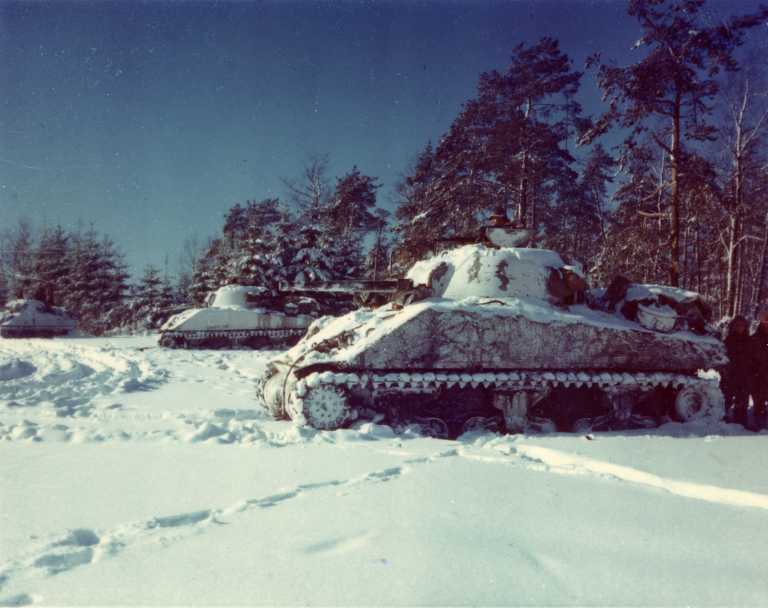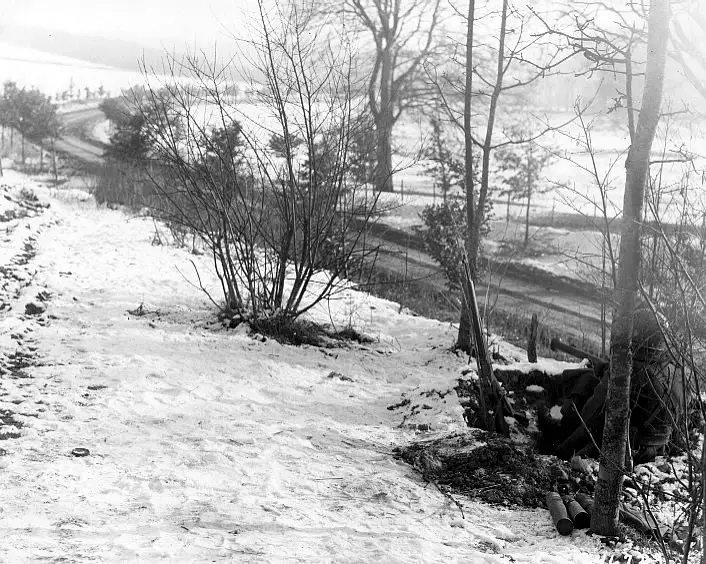Think it’s cold and snowy?
Sit back and pour a bourbon. We’ve got a story for you.
You know what it’s like when your football team has a 21 point lead at the beginning of the third quarter, but then your opponent scores three touchdowns in an amazing display of skill, luck and clutch playing? And it’s the two minute warning, and the game is tied, and all that “we got this” brio that you had 13 game minutes earlier is replaced by the realization you’ve got a lot of work ahead of you?
72 years ago today, the Battle of the Bulge began.
It was among the coldest winters in recent European history…

…cold enough that, as Steven Ambrose noted in Citizen Soldiers, even the boys from the Dakotas and Montana had met their match.
Covered by atrocious weather that grounded US and British tactical air – which, along with the US artillery, which was fast, accurate, available in huge quantities, and had a tradition of blowing things up with style going back to the Civil War, was the thing the Germans feared most – the Germans attacked the thinly held American lines near the point where Belgium, Luxembourg and Germany’s borders meet, in the Ardennes Forest. Here, German troops had broken through three times in the past 75 years – in 1870, 1914 and 1940.
Nobody expected lightning to strike four times. And it showed; the Americans considered it a quiet sector, and garrisoned it thinly, with brand new troops like the 106th Infantry Division, which was just out of training and had no combat experience, as well as the 2nd Infantry Division, which was resting up after having been bled white in the fruitless bloodbath of the Hürtgenwald.
The battle launched legends (the 101st Airborne’s stand at Bastogne, immortalized long before Ambrose’s Band of Brothers brought the story to the HBO audience)…

…and stories that should have been legends (a single platoon of 19 men under Lieutenant Lyle Bouck held off an entire 2,000-man German airborne regiment for a crucial day at the Battle of Lanzerath Ridge, which impeded the German SS-Panzer spearhead, costing it a vital day that may well have allowed the US 2nd Armored Division to get moved into place to stop the advance, to the low-key (the troops of the 99th Infantry Battalion – Norwegian-speaking men from the Dakotas, Minnesota and the Upper Peninsula of Michigan) stopping the German advance cold at Elsenborn Ridge, near Stoumont:

The high command, thinking Germany was on the brink of surrender, had decided to send new replacement troops to the Pacific to get ready for the invasions of Okinawa and, soon, Japan – so the casualties of the first days of the Bulge caused a huge shortage of manpower. This gap was filled by pressing units of cooks, mechanics, construction engineers and clerks into service as provisional infantry units and, finally, the induction of black soldiers – many of them truck drivers – into replacement units. The Army’s superstition at the time was that integrating units would sap morale – so black replacements were sent in 40-man platoons to reinforce companies that had started out as 160 men, but had been whittled way down. Ongoing casualties caused these platoons to get divided into squads of 10 integrated into platoons of 20-30, and as the attrition went on and men got down to the brass tacks of survival, black and white soldiers sharing foxholes. The officers who presided over this went on to
Want the whole story? There are a scad of good books on the subject. They’re worth a read…
…especially when you realize that the US troops that escaped into the woods, re-formed and turned the tide were, on average, about 19 years old – and there was no safe space, anywhere.
Leave a Reply
You must be logged in to post a comment.